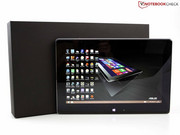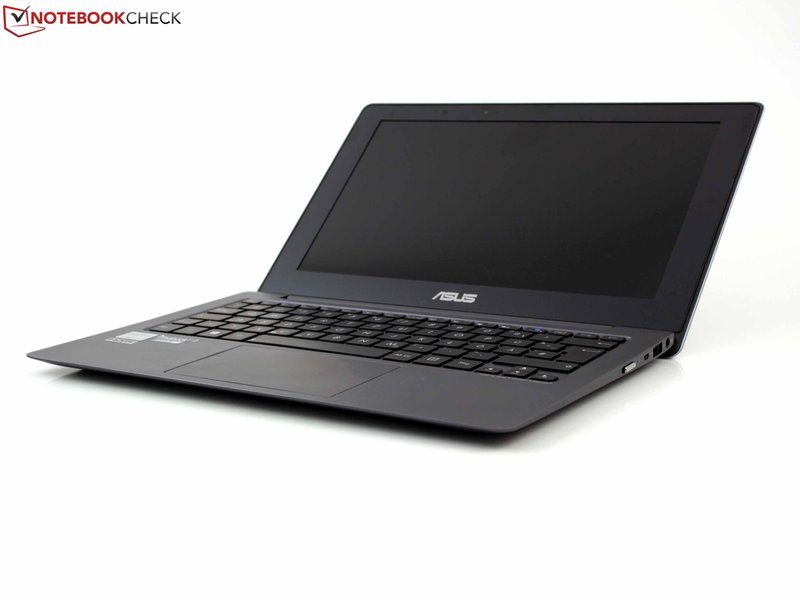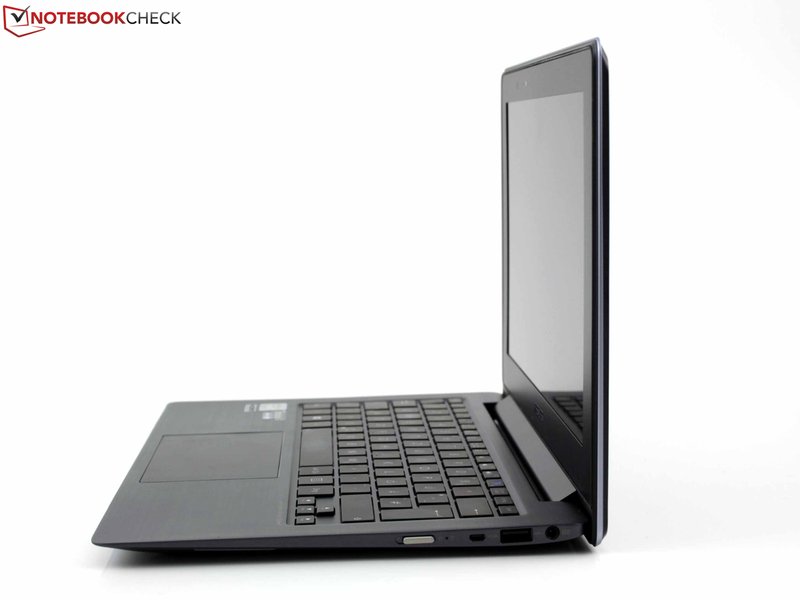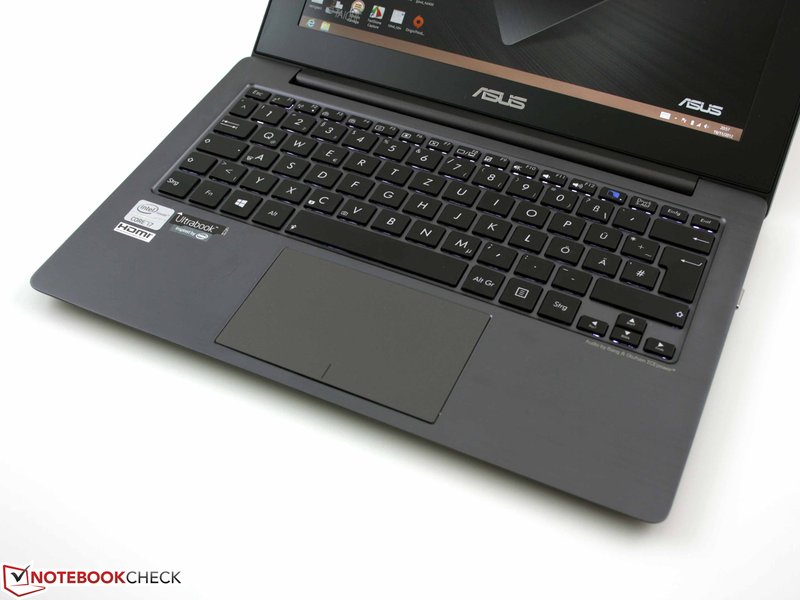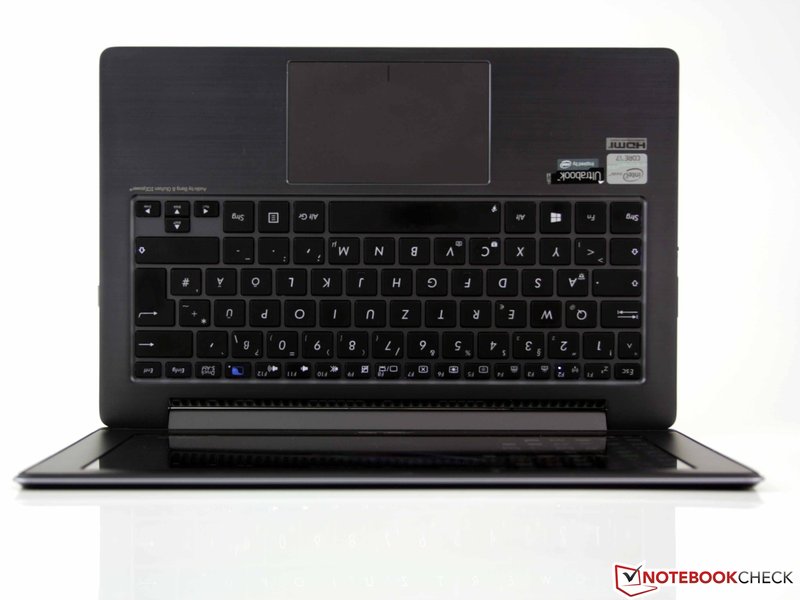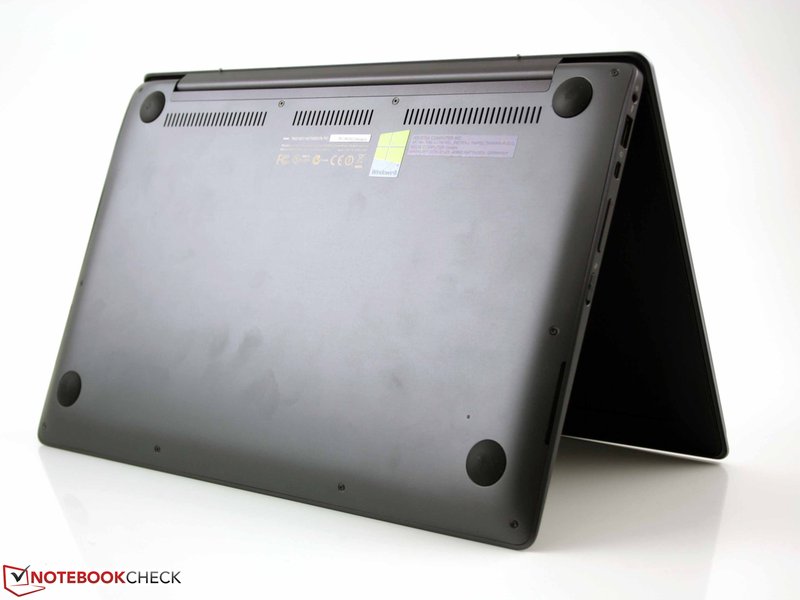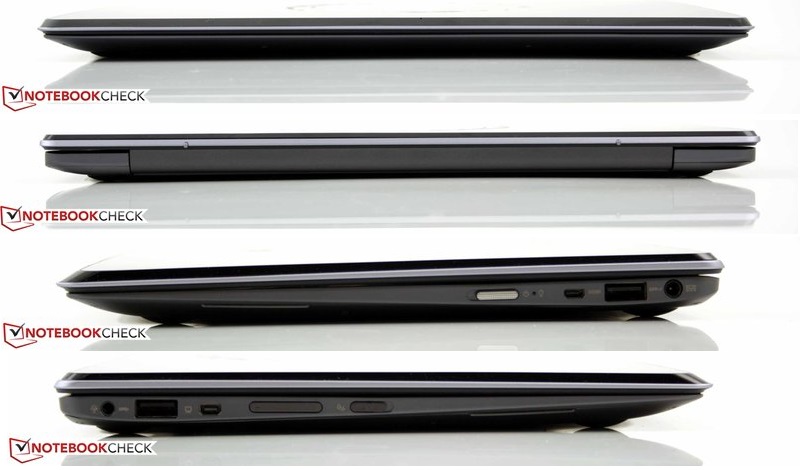Asus Taichi 21-DH71
Spécifications de l'ordinateur portable
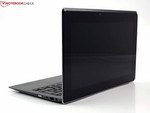
Price comparison
Moyenne de 6 notes (à partir de 7 critiques)
Critiques pour le/la Asus Taichi 21-DH71
Source: IT Reviews
 EN→FR Archive.org version
EN→FR Archive.org versionThe Asus Taichi 21 offers a unique dual-display design, but the end result is a good ultrabook combined with a middling tablet, at a fairly high price. Ultimately, the Asus Taichi 21 (Taichi 21-DH71) is a decent ultrabook, with an innovative design that may not have broad appeal. That’s a shame because the glass-backed lid looks great, and the Zenbook-like design of the laptop echoes Asus’s best systems.
Critique simple, disponibles en ligne, De taille moyenne, Date: 02/01/2013
Notes: Note globale: 60%
Source: PC Mag
 EN→FR Archive.org version
EN→FR Archive.org versionUltimately, the Asus Taichi 21 (Taichi 21-DH71) is a decent ultrabook, with an innovative design that may not have broad appeal. That's a shame because the glass-backed lid looks great, and the Zenbook-like design of the laptop echoes Asus's best systems. Unfortunately, in this period of dual-device confusion, the attitude of "let's throw something at the touch screen and see what sticks" puts the Taichi 21 in the unenviable position of being a good ultrabook and a mediocre tablet, and not everyone will appreciate the combination of the two as a dual-display device. Despite the two-screened awkwardness, short battery life, and premium price, I'll gladly give Asus props for taking an innovative stab at today's odd design problems. For a better convertible ultrabook, however, consider either the Dell XPS 12 or the Lenovo IdeaPad Yoga 13, and for our top pick for ultrabooks, consider the Editors' Choice Toshiba Portege Z935-P300 $999.00 at Amazon Marketplace.
Critique simple, disponibles en ligne, Courte, Date: 01/30/2013
Notes: Note globale: 70%
Source: CNet
 EN→FR Archive.org version
EN→FR Archive.org versionThe Asus Taichi 21 is fun, inventive, and a great conversation starter. It's also likely more clever than practical for many, and has a bit of a novelty feel -- but that's true of many of the new breed of Windows 8 laptop/tablet hybrids, as PC makers struggle to find forms that will appeal to consumers. The marketplace will ultimately decide which designs move forward.
Critique simple, disponibles en ligne, De taille moyenne, Date: 01/29/2013
Notes: Note globale: 75% performances: 80% mobilité: 70%
Source: Digital Trends
 EN→FR Archive.org version
EN→FR Archive.org versionOh Asus, you tried so hard to impress us with the Taichi 21 – and it worked … at first. The idea behind this hybrid is cool and different, and we want to like it. We wish the battery life was a little longer, the bottom was less toasty, and the Taichi had some apps that make the two screens less of a novelty and more of a must-have feature. Alas, that is not the case, and we’re genuinely sad to say so.
Critique simple, disponibles en ligne, Longue, Date: 01/29/2013
Notes: Note globale: 55%
Source: Inside HW
 EN→FR Archive.org version
EN→FR Archive.org versionAs a finished product, Taichi is a huge step ahead for the market, especially since most other manufacturers have stopped at the drawing board for now. Disregarding its few minor drawbacks, Taichi 21 has definitely ploughed no man’s land, with ASUS starting a new chapter in the IT industry yet again.
Critique simple, disponibles en ligne, Longue, Date: 01/26/2013
Source: Laptop Mag
 EN→FR Archive.org version
EN→FR Archive.org versionASUS' Taichi 21 offers an innovative dual-screen design in a lightweight chassis along with impressive sound. Not only is it easy to change from notebook to tablet mode, you can use the external screen for giving presentations. And while there's nowhere to put the pen on the system, we appreciate that the Taichi supports pen input. Unfortunately, its short battery life makes the $1,599 price tough to justify.
Critique simple, disponibles en ligne, Longue, Date: 01/25/2013
Notes: Note globale: 50%
Source: Mobile Tech Review
 EN→FR Archive.org version
EN→FR Archive.org versionAfter the June announcement's shock and awe wore off, the Asus Taichi seemed flashy rather than brilliant. After all, few of us really have use for two displays and those displays add weight and reduce durability (the lid is a piece of glass). Sure, it's novel and allows us to stick with the comfort of a traditional notebook hinge and form factor, but is it worth the $100 premium over single display models?
Critique simple, disponibles en ligne, Longue, Date: 01/24/2013
Notes: Note globale: 75%
Commentaire
Intel HD Graphics 4000:
Carte graphique intégrée aux processeurs de la génération Ivy Bridge. Possède des fréquences différentes selon les processeurs (du ULV au quad core de bureau) et donc des performances différentes.
La plupart des jeux pas trop demandants actuels peuvent tourner de façon fluide. soyez prêts à endurer un rendu graphique assez moche à cause de la basse résolution et des détails au minimum. Par ailleurs ces cartes sont suffisantes pour un travail de bureau et le visionnage de vidéos (pas évident pour la vidéo HD).
>> Plus d'informations sont à trouver dans notre comparaison des cartes graphiques mobiles et ainsi que dans notre liste des Benchmarks affiliés.
3517U:
Puissant processeur basé sur Ivy bridge de type ULV du second trimestre 2012. Il possède une fréquence de 1.9 - 3.0 GHz avec un processeur graphique HD 4000 intégré (350 - 1150 MHz). Le TDP fait 17 W.
>> Plus d'informations sont à trouver dans notre comparaison des processeurs mobiles.




